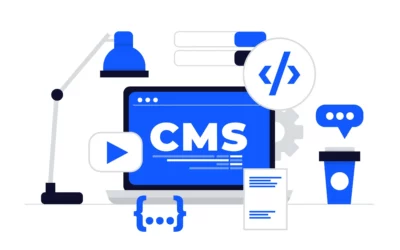What is a prompt?
Before moving to Prompt Engineering, let us first understand – what is a prompt.
In simple words, a prompt is nothing but a query question, or instruction that you give to a computer to ask for information or help on a particular topic. To understand better, consider the below example.
Let’s say you want to know the weather, so you will ask the computer something like “Hey, how’s the weather today?” to which you will get the weather details. So here, “How’s the weather today?” is a prompt that is fed to the computer, which gives you the right answer to your question.
What is Prompt Engineering?
Now, that we know the meaning of prompt, let us move towards what Prompt Engineering is. In simple words, Prompt Engineering is a process of designing the input text, meaning a prompt that you give to the computer, which is then passed to the Large Language Model (LLM) to get the desired output. LLM, an AI algorithm, uses large datasets to understand, summarize, and predict new content. Some examples of LLMs include GPT-3, LaMDA, and Jurassic-1 Jumbo.
The prompt can be a simple request, question, or query that you need help with or it also can be complex instruction or constraints varying from use case to use case. The main goal of prompt engineering is to help the LLM to understand the user input, and user intent to generate the most relevant and desired output.
Sounds easy, right? But actually, it isn’t, as it becomes very challenging because LLMs are trained on very large datasets that consist of both text and code. So sometimes you may get irrelevant answers and here’s where prompt engineering plays a vital role and helps the LLM to understand the user input (prompt) and provide the user with the desired output.
Below are some strategies that can help in producing the desired answer or output through effective prompt engineering.
Strategies for effective prompt engineering :

- Clear and Specific Instructions: When designing a prompt, make sure that the prompt conveys what you want from the model. If your instructions are unclear or improperly fed to the model, the model might produce irrelevant outputs.
- Contextual Details: While framing a prompt, make sure you provide relevant context within the prompt. In easy words, your prompt must help the computer understand what you need, which can be achieved by giving it some previous or background information on the context. It is very similar to storytelling from the beginning so it will make sense to the model.
- Desired Format or Style: This strategy includes telling the computer how you want your answer to look or sound. You can simply ask for an essay, a dialogue, a poem, a formal or casual tone, etc. based on your use case.
- Examples and Analogies: Examples can help the model better understand your needs. Try including examples or analogies to guide the model’s understanding, you can also use a comparison here. This will eventually help the model to help you better by providing appropriate output.
- Step-by-Step Instructions: When you want to perform a series of tasks or more than one task at a time you can break your task into multiple instructions step by step which helps minimize confusion and a better understanding of the instruction or task to the model which helps in better output generation.
- Controlled Output Length: You can ask the model to generate the output of a particular length. The length can be according to the desired word count, sentence count, or paragraph count. For example, you want the model to write an email asking for a leave, so in this case, you can specify the model to write the email in the desired word, sentence, or paragraph count.
- Injecting Personality or Knowledge: This strategy is very much useful when you want the response from the model to sound like a particular person or want your output of a certain expertise level or age group. For example, you can ask a question like “Explain prompt engineering as you explain to a ten-year-old” or “Write this as if you are the manager of the company”.
- Feedback Loop: Sometimes it happens that the answer that you are looking for via the model is almost correct, so at that time you can use that answer to help the model understand it better and eventually generate a proper or desired answer for you. You can simply do it by telling the model that, “That’s close, but I want more details”
- Iterative Refinement: Sometimes the output or answer that you get through the model is not what you are looking for or if you are not satisfied by the generated output, in such cases, don’t hesitate to change or refine your prompts. What you can do in such cases is change your request a little bit and try again.
Below are some examples of effective prompts:
- “Write a poem about rain.”
- “Write a summary of the news article about the recent floods.”
- “Generate a code in JavaScript to calculate the Fibonacci sequence.”
- “Translate this sentence from English to Hindi.”
- “Answer the question: What is the meaning of life?”
Conclusion
Prompt Engineering is an emerging field that focuses on improving the performance of the LLMs. By proper crafting of prompts, one can improve the output and achieve more precise and reliable results also by mastering the above-mentioned strategies one can unlock new possibilities and utilize the true potential of the language models.





